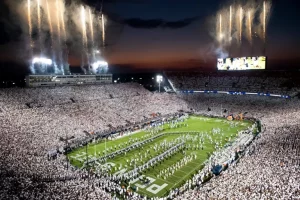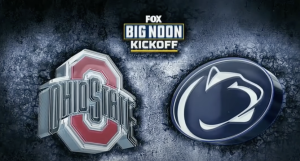After a dynamic period of coaching shifts and player transfers this winter and spring, college football rosters are largely settled for the 2024 season. The Future Power Rankings (FPR) series concludes with its team breakdown, aiming to provide a comprehensive forecast spanning the next three seasons (2024, 2025, and 2026). This projection considers current rosters, committed recruits, coaching histories, and team performance trends.
The 2024 season marks a significant moment with realignment changes across major conferences: the SEC welcomes Texas and Oklahoma, while the Big Ten adds USC, UCLA, Oregon, and Washington, among others. Such moves often lead to initial challenges in Year 1, but the FPR looks ahead to a three-year horizon, anticipating potential adjustments and impacts.
Furthermore, college football’s elite landscape sees pivotal shifts, notably with the retirement of Nick Saban, widely regarded as the sport’s greatest coach, after securing seven national titles, six at Alabama. Jim Harbaugh’s departure from Michigan to the NFL follows his success in guiding the Wolverines to their first national championship since 1997. Among the College Football Playoff contenders, three (Alabama, Michigan, Washington) underwent coaching changes, while Texas prepares for a conference shift.
Previous FPR rankings in key areas such as quarterbacks, defenses, and offenses contribute to the overall team assessments, alongside factors like coaching stability and recent performance. Notably, Oklahoma State, absent from earlier top 25 lists, features prominently in the current team rundown.
Here’s an overview of the latest top 25 teams according to the most recent FPR rankings, reflecting the evolving landscape and expectations heading into the upcoming college football season.

 1. Georgia Bulldogs
1. Georgia Bulldogs
5. Michigan Wolverines
Scouting the Wolverines:
Michigan faces an intriguing season ahead under new head coach Sherrone Moore, following significant departures both on the field and in coaching staff. Despite these challenges, the Wolverines have promising prospects, particularly on defense where they expect to lead initially.
Offensively, Michigan’s key challenge lies in identifying a starting quarterback among candidates like Alex Orji. The offensive line, anchored by returning starter Myles Hinton and bolstered by Northwestern transfer Josh Priebe, looks to maintain stability despite significant changes. Tight end and running back positions seem robust with Donovan Edwards stepping into a prominent role, supported by veterans like Kalel Mullings and newcomers Benjamin Hall and Jordan Marshall.
At wide receiver, the team undergoes a rebuilding phase, integrating players like Semaj Morgan, Fredrick Moore, and Amorion Walker to boost the revamped unit. The ongoing recruitment efforts will be crucial, especially in enhancing depth and talent across all offensive positions.
Defensively, Michigan’s front seven shows promise with players like Mason Graham, Kenneth Grant, Josaiah Stewart, and others poised to anchor the line. Linebacker depth sees reinforcement with Maryland transfer Jaishawn Barham joining the fold, complementing holdovers like Ernest Hausmann. The secondary, managed by NFL veteran coordinator Wink Martindale, receives additional strength from recent transfers and returning stars like Will Johnson, Makari Paige, and Quinten Johnson.
Looking forward, Michigan’s success hinges on Moore’s leadership transition and the development of younger talents, particularly on the offensive line and in defensive positions. The team’s recent recruiting surge indicates a proactive approach to maintaining competitiveness in future seasons, bolstered by commitments from top prospects like Brady Hart and Kainoa Winston.
Overall, while Michigan faces uncertainties, especially at quarterback and wide receiver, the team’s defensive prowess and strategic recruitment under Moore position them competitively for the upcoming season and beyond.
tiyear options such as lineman Matayo Uiagalelei and edge Teitum Tuioti.



